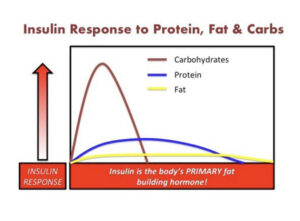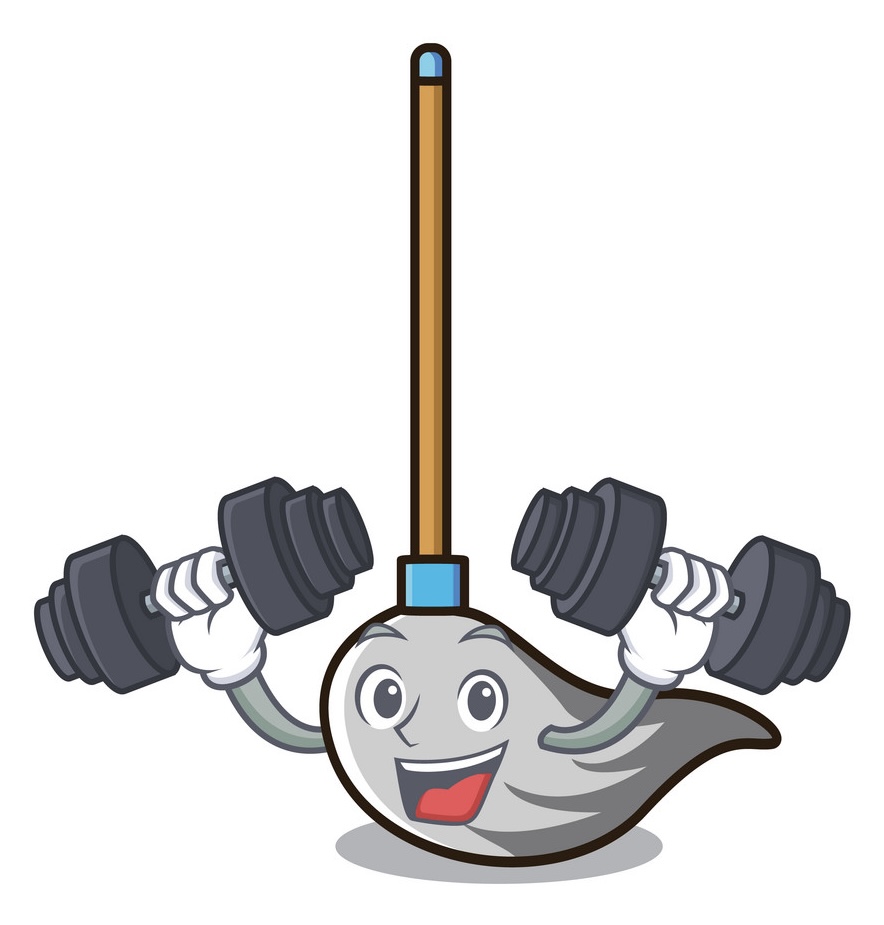Welcome to the BTF Metabolic Optimization Program (MOP)

With the BTF MOP, you will be able to clean up your diet and establish healthy lifestyle choices that will help you lose weight and feel great.
Use the BTF MOP to:
- improve your metabolism and ability to burn calories
- improve your body composition by increasing muscle mass and decreasing body fat
- decrease inflammation in your body
- control your insulin and blood sugar
- optimize your body’s mineral balance
As you follow the BTF MOP you’ll learn to eat a healthy balance of high-quality protein, carbohydrates and fats in an appropriate ratio that will improve your metabolism and help you find your ideal body weight.
The most essential macronutrient to focus on when designing your nutrition program to optimize your metabolism?
PROTEIN
Protein is essential for most of the cellular functions in the body. Protein does more than just build muscle. It is important in controlling your metabolism.
Metabolism refers to a series of chemical reactions that occur in a living organism to sustain life.
Protein is also important for mood, immune response and even your sleep. Most people are not eating enough protein. The RDA (Recommended Dietary Allowance) for protein is set at 0.8 grams per 2.2 pounds of body weight. Keep in mind, that the RDA for protein was set as a bare minimum to simply keep you alive. It doesn’t take into account active lifestyles of people that want to thrive! An easy and more appropriate target for active individuals is 1 gram per pound of body weight.
If your current body weight is 160 pounds and you desire to weigh 145 pounds, your goal for total protein per day is 145 grams.
MUSCLE
 Muscle is the foundation of your metabolism and helps regulate blood sugar and fats. The stronger and healthier your muscles, the more carbohydrates (sugar) and fat your body burns for metabolism. Most health issues confronting adults are not a result of being “over-fat”, but being “under-muscled”.
Muscle is the foundation of your metabolism and helps regulate blood sugar and fats. The stronger and healthier your muscles, the more carbohydrates (sugar) and fat your body burns for metabolism. Most health issues confronting adults are not a result of being “over-fat”, but being “under-muscled”.
There are 2 ways to stimulate and protect muscle:
Protein builds muscle via protein synthesis and resistance training accelerates the process. The more active your muscles, the more likely you’ll have lower blood pressure, ideal cholesterol, and better overall health.
Note on fad and crash diets: losing large amounts of weight in a short amount of time typically lead to body fat loss & muscle tissue loss which amounts in an overall decrease in metabolism.
If you don’t already regularly exercise to maintain and build muscle, start today!
 The BTF Health & Fitness Home Exercise Program is an easy and effective way to start a workout routine that will complement the nutrition changes you will be making with the BTF MOP. Best part about this simple neighborhood program is that there is no gym fee membership and it’s always available!
The BTF Health & Fitness Home Exercise Program is an easy and effective way to start a workout routine that will complement the nutrition changes you will be making with the BTF MOP. Best part about this simple neighborhood program is that there is no gym fee membership and it’s always available!
Click on the link to check out the BTF Health & Fitness Home Exercise Program
PROTEIN TARGET
 The key component of the BTF MOP, is to design each meal around a targeted amount of high quality protein. If you’re trying to gain muscle, you can increase the number of meals you eat based on your energy requirements.
The key component of the BTF MOP, is to design each meal around a targeted amount of high quality protein. If you’re trying to gain muscle, you can increase the number of meals you eat based on your energy requirements.
*more effective to increase number of meals per day than to eat more protein per meal
For your proteins, choose organic, free-range, cage free, wild caught and sustainable whenever possible.
WHAT ABOUT FATS AND CARBOHYDRATES?
The most important factor when it comes to diet is avoiding simple carbohydrates (sugar and flour).
Sugar and flour in the form of glucose burns quickly for energy in the body, but it comes at a heavy cost. This quick and dirty glucose reaction in the body creates inflammation. Repeatedly exposing your body to high levels of inflammation will make you more vulnerable to chronic degenerative diseases (stroke, heart attack, Alzheimer’s disease, cancer, diabetes, autoimmune disease).
How do you avoid sugar and flour? Simple, just avoid all processed foods! Basically, if it has an ingredient list, you should avoid eating it. This could be the best thing you can do for your health.
 Eating sugary foods will cause your body to release large amounts of insulin. Insulin is the body’s primary fat building hormone. If you want to avoid storing excess body fat, then you need to keep your insulin response in check. So eating the right amounts of protein and fat for your daily calorie needs is crucial in your quest to maintain your ideal body weight and fat percentage.
Eating sugary foods will cause your body to release large amounts of insulin. Insulin is the body’s primary fat building hormone. If you want to avoid storing excess body fat, then you need to keep your insulin response in check. So eating the right amounts of protein and fat for your daily calorie needs is crucial in your quest to maintain your ideal body weight and fat percentage.
But this doesn’t mean that all carbohydrates are bad, in fact, far from it. Most of the vitamins and minerals we consume in our diet come in the form of healthy carbohydrates (fresh fruits and vegetables).
SO WHAT SHOULD I EAT?
To figure out how many calories you should be consuming each day we need to know a few easy formulas as every macronutrient has a calorie count per gram.
For most adult humans, the ideal calorie breakdown of protein, carbohydrates and fats is:
- protein 30-40%
- carbohydrate 30-40%
- fat 30%
Always begin your diet planning with protein requirements.
For a 180-pound man you would need to consume (daily) to maintain current body weight:
- Protein*: body weight x 1 gram = 180 lbs x 1 gram = 180 grams of protein x 4 calories per gram = 720 calories
- Fat: body weight x 0.4 grams = 180 lbs x .4 grams = 72 grams of fat x 9 calories per gram = 648 calories
- Carbohydrates: 130 grams** x 4 calories per gram = 520 calories***
The average American is currently eating over 300 grams of carbohydrates daily. This is why we are seeing a pandemic of obesity in this country.
Daily Calorie Requirements (180 lb man) = 720 + 648 + 520 = 1888 calories
*Body builders or individuals looking to add more muscle mass can increase their protein requirement.
**130 grams (4.5 ounces) of carbohydrates is the RDA and could consist of 5 servings of vegetables, 3 servings of fruit and 3 servings of whole grains.
***Athletes and individuals with physical occupations (i.e. carpenter, construction worker etc.) or engaged in intense physical activity like high-intensity interval training may need to increase carbohydrate intake based on energy requirements. If you feel the need to add more calories because you are either losing weight, don’t feel like you have enough energy, or are constantly hungry, then add 200-500 calories to your carbohydrate amount until you find your ideal body weight and feel your best.
Now, what about a 160-pound woman that wants to lose 15 pounds? We will base her calorie needs on her goal weight of 145-pounds.
- Protein: 145 lbs x 1 gram = 145 grams x 4 calories per gram = 580 calories
- Fat: 145 lbs x .4 grams = 58 grams x 9 calories per gram = 522 calories
- Carbohydrates: 130 grams x 4 calories per gram = 520 calories
Daily Calorie Requirements (160 lb woman that desires to be 145 lb) = 580 + 522 + 520 = 1622 calories*
*If she is not achieving her desired weight loss, it means her daily calories are too high or her daily exercise is too low or both. In this case she should decrease her carbohydrate intake, especially from starch and sugar like breads, cereals, pasta and rice. She might decrease her total carbohydrate intake to 50-70 grams in order to achieve her desired weight loss.
QUICK NOTE ON FIBER
Fiber is found in some of the carbohydrate foods. Good examples are vegetables, berries, citrus fruits, apples, beans, lentils and oatmeal. You need to eat 14 grams of fiber for every 1000 calories you eat daily. So the 180 pound man needs about 26 grams of fiber and the soon-to-be 145 pound woman needs 23 grams of fiber. It’s ok to eat a little more, but make sure most of your carbohydrate foods contain fiber.
Weight management always requires some trial-and-error to see what is right for you. Everyone is different based on age, body composition and current level of physical activity, but the basic principle of getting your protein levels sufficient is the foundation for success.
10 HELPFUL TIPS
- Get a food scale so you can weigh food items that will help you track your calories until you get a good feel for how much protein you should be eating.
- Get a calorie counting app for your phone such as My Fitness Pal so you can track your food intake. This My Fitness Pal will categorize all your food as well so you can see the breakdown of protein/carbs/fats as a percentage for each day.
- iI you’re limited for time in the morning (or for any meal) you can mix water, coconut water or unsweetened almond or coconut milk with a protein powder for a quick breakfast or snack. At BTF we use Designs for Health Bone Broth Beef Protein.
- Prep lunch (and dinner if you work late) the day before and bring it with you so that you don’t have to eat out during your workday. Use glass or BPA-free Tupperware to pack your food. Home cooking is always preferred, but if cooking isn’t possible, then a meal service may be helpful.
- If you have kids, don’t nibble in the kitchen while you prepare their foods or snacks as they may need the extra calories, but you do not!
- Always select high quality food sources. Buy fresh vegetables, fruits, meats and eggs. Avoid processed foods in bags and boxes, fried foods, refined sugar, sauces, alcohol, processed dairy and gluten.
- Use cold-pressed extra virgin olive oil & apple cider vinegar as a salad dressing instead of a commercial dressing that will have hidden sugars.
- When you deviate from you program for a holiday meal or a birthday cake, don’t stress about it and get back in your healthy groove the very next meal.
- Chew your food thoroughly and stop eating when you are ALMOST full.
- Drink lots of water and add a mineral supplement to your water such as Re-Lyte Electrolyte Mix that can help support proper functioning of your muscles. Plus it will make you crave and drink more water (available for purchase at BTF).
If you would like help with your diet, please give us a call at 310-534-1900 or email us at info@backtofunction.com. Our BTF nutrition coach, Whitney Sulentor, is available for consultations to get you started on the BTF MOP today!
REFERENCES
The Lyon Protocol. Dr. Gabrielle Lyon & Peter Baker.
Back to Function Health & Fitness Home Exercise Program, www.backtofunction.com.
The Kind of Food You Eat Matters!. www.backtofunction.com.



